Pop-Tarts' "Crazy Good Summer" Pop-Up Concert

The Kellogg’s brand hosted a pop-up concert on Northerly Island in Chicago July 19. With performances by Carly Rae Jepsen, Boys Like Girls, and teen sensation Austin Mahone, the event also allowed guests to pose on the red carpet with giant plush Pop-Tarts and sample treats from a Pop-Tarts bar.
Photo: Jeff Schear/Getty Images for Kellogg’s Pop Tarts
Garnier Fructis at Bonnaroo
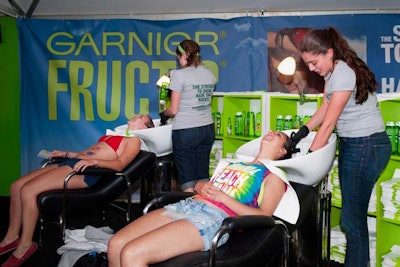
More than 80,000 people traveled to a remote 700-acre farm in Tennessee June 7-10 for the Bonnaroo Music & Arts Festival. Knowing the attendees would be outside day and night listening music on multiple stages, brands such as Garnier Fructis provided practical services such as free hair-washing and styling in a 40- by 40-foot air-conditioned tent.
Photo: Erika Goldring
Garnier Fructis at Bonnaroo
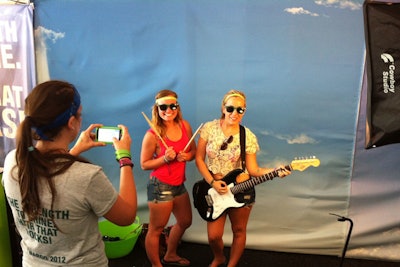
The L'Oréal-owned brand also brought music props for guests to pose with after their hair service. Participants received the photos via email, allowing them to share the images on social networks.
Photo: Courtesy of Garnier Fructis
Philips at Bonnaroo

Philips sponsored a silent disco at Bonnaroo. The company provided 400 of its new CitiScape Collection headphones for guests to wear to listen to tunes being spun by two DJs.
Photo: Courtesy of Philips
Ford at Bonnaroo

Ford dubbed its tent "Destination Escape," playing on the name of its Escape vehicle that was displayed outside. Inside, festivalgoers could cool off in the air-conditioned space, listen to live performances, and charge their phones.
Photo: Courtesy of Ford Motor Company
Ford at Bonnaroo

Ford handed out more than 3,000 free T-shirts, screen-printed on-site with designs inspired by mural artists working outside the tent.
Photo: Courtesy of Ford Motor Company
State Farm at Bonnaroo
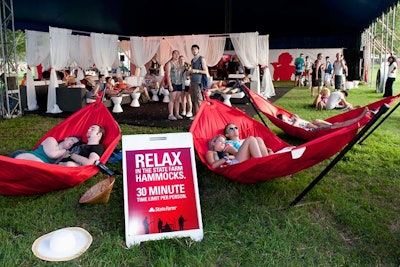
Bonnaroo attendees could relax in hammocks and enter to win V.I.P. passes in the "Great State Lounge" hosted by State Farm. The insurance company also provided what it called "Bonnaroo Roadside Assistance"—free services such as help with lockouts, flat tires, and dead batteries.
Photo: Erika Goldring
Emusic at Pitchfork Music Festival
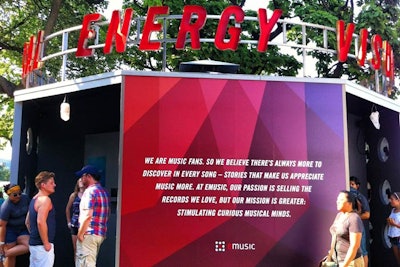
As part of the July run of Pitchfork Music Festival in Chicago’s Union Park, Web-based music store Emusic staged an activation that allegedly read spiritual vibes and frequencies. Inside a small photo booth, consumers could listen to songs from various Pitchfork acts while placing their hand on an electrical plate. The installation then printed out colorful strips that showed their different “auras” for each listening experience. New York-based agency Mother worked with Chicago's Ravenswood Events to produce the unusual experience.
Photo: Jenny Berg/BizBash
Whole Foods at Pitchfork Music Festival
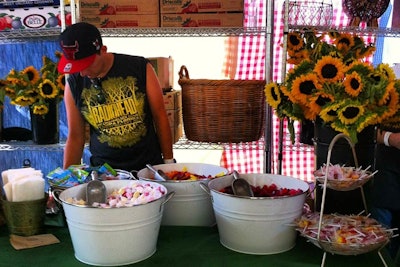
Whole Foods erected an on-site farmer's market where guests could purchase everything from strawberries to sunflowers. The cute, country-style space was dressed up with gingham curtains and woven baskets.
Photo: Jenny Berg/BizBash
Heineken at Pitchfork Music Festival

Darkened and shot through with green light—Heineken's signature hue—the tent had projection videos of real-time Pitchfork concerts playing on its ceiling. California-based Corso Communications produced the activation.
Photo: Courtesy of Pitchfork Music Festival
Adidas at Lollapalooza
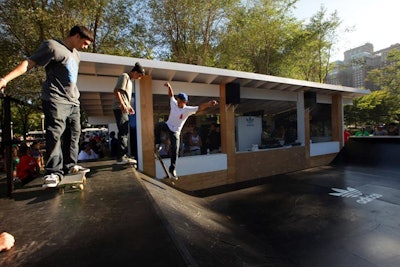
On festival grounds, the Adidas Originals Black Top let guests watch professional skateboarders in action (and, of course, Adidas gear). The activation also let guests snap photos and enter to win giveaways.
Photo: Barry Brecheisen for BizBash
Toyota Prius at Lollapalooza
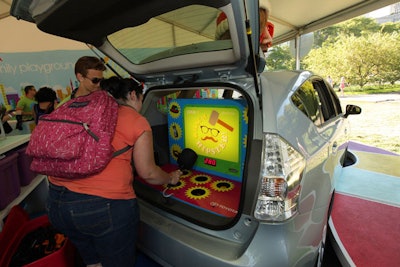
The Toyota Prius Family Playground was filled with games, including a human-powered prize wheel that had guests run to win gifts from the automaker. The most talked-about aspect of the marketing effort was the "Whac-a-Hipster" game, which let guests use a soft mallet to smack little pop-up heads with stylized mustaches and glasses.
Photo: Barry Brecheisen for BizBash
Sony PlayStation at Lollapalooza
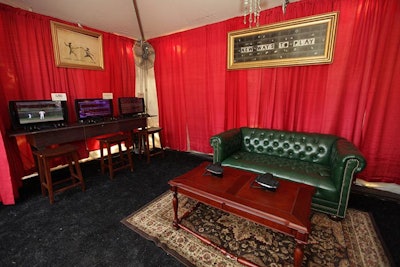
Behind the Red Bull Soundstage, PlayStation hosted a V.I.P. area that had plush seating, games, and a Magnolia photo booth. There were also open bars.
Photo: Barry Brecheisen for BizBash
'Rolling Stone' Rock Room

Rolling Stone hosted the Rock Room at the Paris Club on Friday and Saturday of Lollapalooza weekend. The daytime event served brunch to a guest list that included media, band managers, label reps, and guests of the performing bands. The "Women Who Rock" showcase, linked to a competition hosted by the magazine, had performances by finalists, including Rita Ora. The winner, selected by readers' online votes, will appear on the cover of the September issue of Rolling Stone.
Photo: Anjali Pinto/Rolling Stone
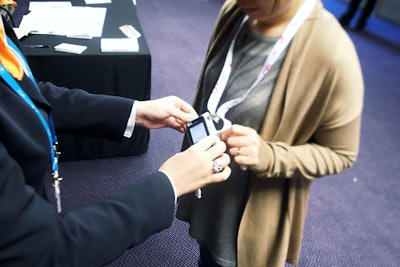
Room monitors can check in attendees by tapping an N.F.C.-enabled device to event badges embedded with an N.F.C. tag.
Photo: Courtesy ITN International
1. Zkipster
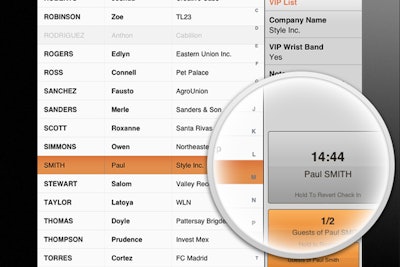
Zkipster is a service to manage guest check-in on iPads at private events. It launched last year in the United States following a European debut in 2011. Users upload their guest list on a Web platform and then access it at the event through an iPad app; it takes an average time of two seconds to check in a guest at an event with 750 people. Hosts can edit the guest list in real time and send email and text alerts when specific guests arrive. After the event, the system can generate data such as the time that people arrived, which can be helpful when planning staffing for future events. Clients include Hearst, HBO, Hugo Boss, and the Whitney Museum. Future updates will allow each guest to be identified with a photo rather than just a name. Pricing can be done on a per-event basis for $75 or as a subscription for $750 for four months or $2,000 per year.
Photo: Courtesy of Zkipster
2. Blyve

Blyve is a platform for live online events. The system is intended for companies to host interactive online events: for example to launch a new product, share educational information, or conduct training. Walgreens has used Blyve to host an interactive chat on beauty tips, with the link to the chat embedded on the Walgreens Web site. The system has interactive features such as polls and moderated Q&A functions. A Twitter widget allows hosts to search for tweets about the online event and then invite the people who tweeted to join the conversation. The platform can also integrate media from Ustream, YouTube, Instagram, and other services. Hosts can use the platform to generate revenue by including ads or offers from sponsors. Pricing is either per event or, for recurring events, based on the number of participants.
Photo: Courtesy of Blyve
3. Postano
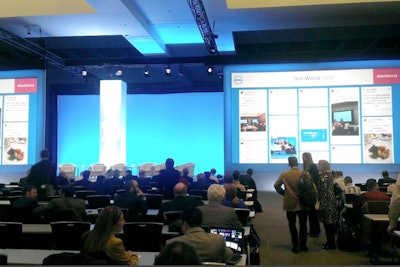
Postano is a tool used to display social media feeds online or at an event. The system aggregates content from Twitter, Facebook, Instagram, YouTube, Tumblr, Pinterest, and more based on specific account names or hashtags. Hosts can monitor the content before it is shared through the system or have it instantly displayed. The Postano display can be designed with custom colors, logos, and animations, and it can be shared through Facebook, a Lightbox widget, on a large screen, or on a touch-screen monitor. At Dell World in December the company used Postano to display a live feed of content from several conference hashtags during remarks from C.E.O. Michael Dell and elsewhere at the event. Additional Postano clients include Tiffany & Company, Microsoft, and Nine West. Pricing starts at $5,000.
Photo: Courtesy of Postano
4. Emobile

Emobile is the newest product in the suite of event management software from Etouches. The tool allows users to design, test, and publish their own Web-based mobile app through a simple drag-and-drop interface. The product is integrated with other software from the company so planners can import data such as agendas and directories of speakers and attendees. In addition, attendees can use the app to communicate with one another. For now, Emobile creates a Web app that can be downloaded by scanning a QR code. In April it will become available as a mobile app for iOS, Android, and other platforms. The product is a $500 add-on to the Etouches software package.
Photo: Courtesy of Etouches
5. EventMobi
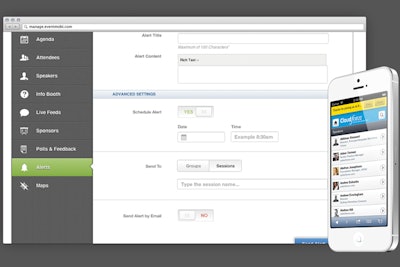
When EventMobi launched in 2009 as one of the first do-it-yourself app creators, it was primarily a digital show guide. Since then it has been updated with interactive features. The latest updates, which begin rolling out in February, will give planners the ability to communicate with subsets of attendees—for example, to invite V.I.P.s to a private dinner or send an alert to all exhibitors. EventMobi is also adding a private real-time chat function for attendees so they can use the app to initiate meetings or networking.
Photo: Courtesy of EventMobi
Brightbox
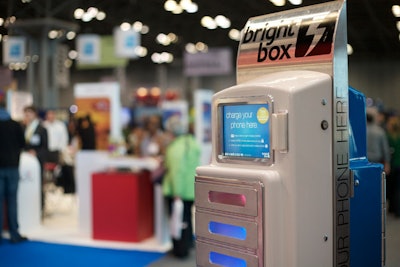
Charging stations are hot commodities at conferences and trade shows, but they can also be a distraction as users stand by waiting for their phones to charge. Brightbox eliminates that issue. The charging station is secure, so users can leave their phones—for a few minutes or a few hours—to go about their business. Each unit has six compartments that are unlocked with the swipe of a credit card. At events where the units are provided by the host or sponsored by a vendor, charging is provided for free to the attendees, so the credit card simply acts as a key. Brightbox launched in early 2012 and has been used at the Democratic National Convention and the New York Times Travel Show. To recognize sponsors, the company can add custom wraps on the unit or add logos or other information to the user interface screen.
Photo: Courtesy of Brightbox
PSAV's Interactive Video Wall
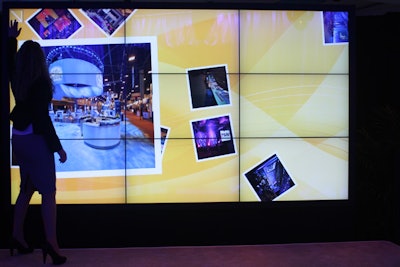
CNN used this type of interactive video wall during its election coverage and now it's available for events. PSAV offers two standard sizes, each using 46-inch square screens configured in either a two-by-two or three-by-three format. The company can also create custom screens of any size. The wall operates like a large iPad with about two dozen apps to create maps, presentations, and games. The product can be used as a presentation screen in educational sessions or in common areas as interactive digital signage, for example to provide venue maps and sponsor information. At a trade show, the wall can display exhibitor logos and information when users click on a specific booth. Within a booth, users can input their email addresses to receive additional information, creating an instant lead retrieval system.
Photo: Mitra Sorrells/BizBash
NiceMeeting

Audience members at conferences and meetings are likely to have their smartphones and tablets out during presentations, so why not use those devices for engagement? The browser-based service NiceMeeting allows users to view presentation slides on their devices in sync with the presenter. Attendees can flip back and forth through slides at their own pace, submit questions to the speaker, and chat with other guests. Presenters can use it to conduct polling and share files in real time. A new feature allows users to add notes to the slides and then save the files to their device or to a cloud-based service, creating a fully paperless solution for presentations. Planners can upload their registration lists so NiceMeeting access is only available to registered attendees, or they can choose to leave access open.
Photo: Courtesy of NiceMeeting



















